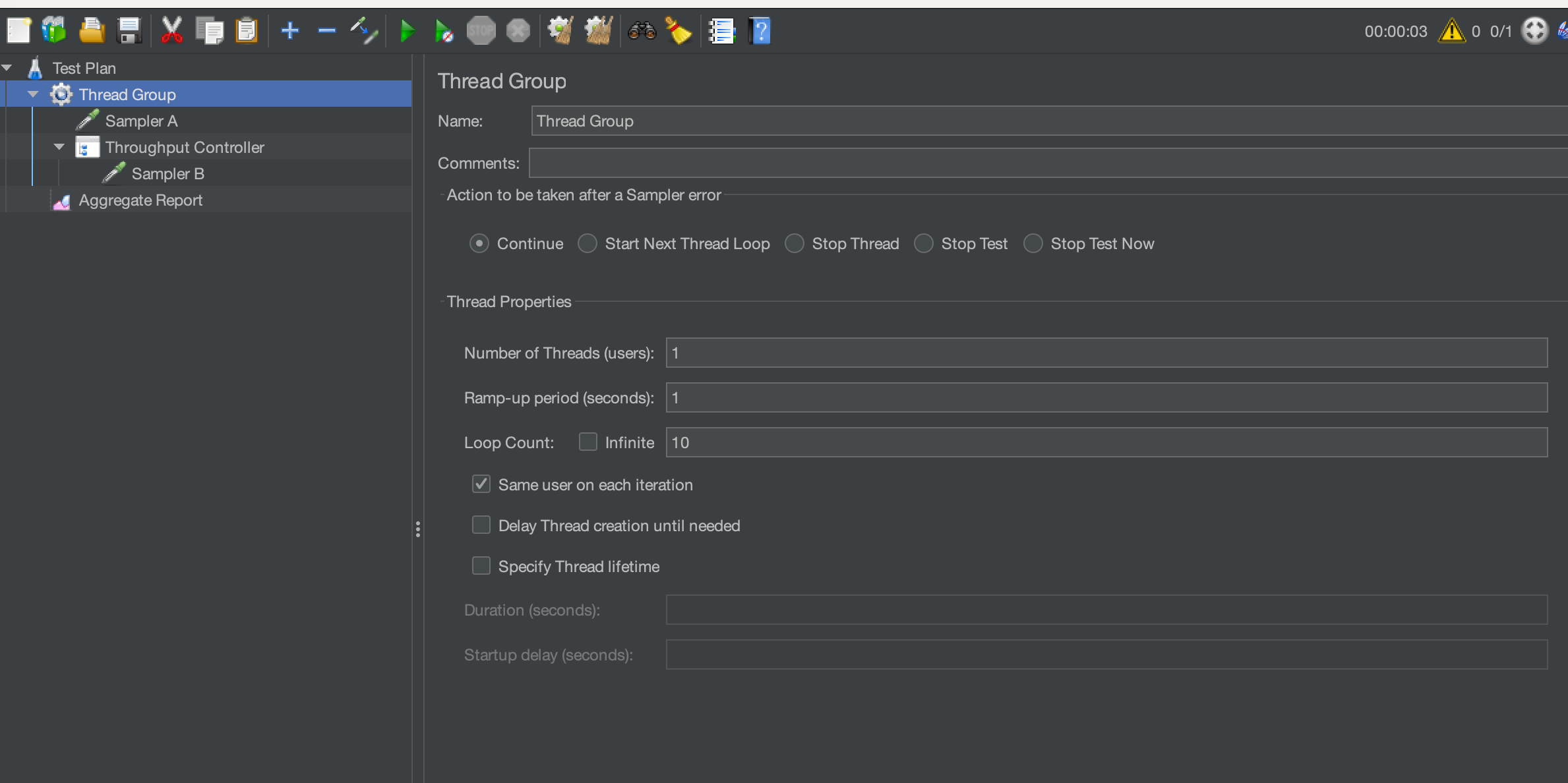JMeter Throughput Controller
In this blog post we are going to be looking at the Throughput Controller. Its name is a little misleading as it does not control the throughput in terms of managing load across the duration of a test, this is handled by elements such as the Constant Throughput Timer. The Throughput Controller can support you in building quite complex scenarios especially when coupled with other Controllers and we will explore this in this blog post as well as looking at how this Controller can provide benefit in real-world performance testing scenarios. OctoPerf support this behaviour natively on their SAAS platform through the use of the Flow Control Action that can support the same patterns of behaviour that we will discuss in this blog post.
Basic example
Let’s create a JMeter test to demonstrate how this Throughput Controller Works. We will use a set of Dummy Samplers to achieve this. If we create this test where we have 2 Samplers:
- Sampler A
- Sampler B
With Sampler B being a child of a Throughput Controller.

We can see that we have a single Thread with the Loop Count set to 10.

